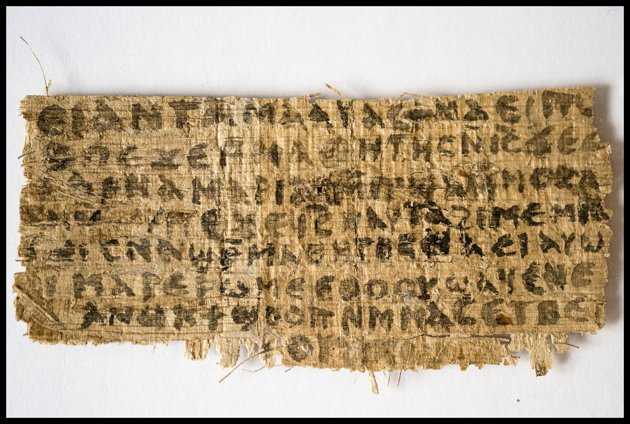What Does the Jesus' Wife Papyrus Say?

A newly discovered scrap of papyrus dating to the fourth century suggests that at least some early Christians believed Jesus had a wife. Discovered by Karen King, a historian of early Christianity and professor at Harvard Divinity School, the torn fragment holds an excerpt of a gospel, or account of Jesus' life, written in a language of early Egyptian Christians called Coptic.
The eight lines of text, which are cut off at both ends, have been translated by King and other Coptic experts as follows:
1) ... not [to] me, my mother gave to me li[fe] ...
2) The disciples said to Jesus, "...
3) ... deny. Mary is worthy of it ... (or, alternatively, Mary is not worth of it ...)
4) ..." Jesus said to them, "My wife ...
5) ... she will be able to be my disciple ...
Sign up for the Live Science daily newsletter now
Get the world’s most fascinating discoveries delivered straight to your inbox.
6) Let wicked people swell up ...
7) As for me, I dwell with her in order to ...
8) ... an image ...
"Mary" may refer to Mary Magdalene, a contemporary and close friend of Jesus who is sometimes described as his "companion" in other early gospels. The references to Jesus having and dwelling with a wife (Mary Magdalene or otherwise) who "will be able to be" his disciple does not prove that Jesus did have a wife. According to King, it merely indicates that a school of his followers held that he did.
"This fragment suggests that some early Christians had a tradition that Jesus was married," she told The New York Times. "There was, we already know, a controversy in the second century over whether Jesus was married, caught up with a debate about whether Christians should marry and have sex."
The controversy remains relevant today, she said. In the Roman Catholic Church, for example, women and married men are barred from priesthood because of the model thought to have been set by Jesus. ['Gospel of Jesus's Wife' Discovered]
The Coptic text was transcribed in the fourth century, but certain phrases suggest it was a copy of a gospel composed earlier. "This gospel likely dates to the second half of the second century, because it shows close connections to other gospels which were written during that time, in particular the Gospel of Thomas, the Gospel of Mary, and the Gospel of Philip," King explained on her website.
Follow Life's Little Mysteries on Twitter @llmysteries. We're also on Facebook & Google+.










